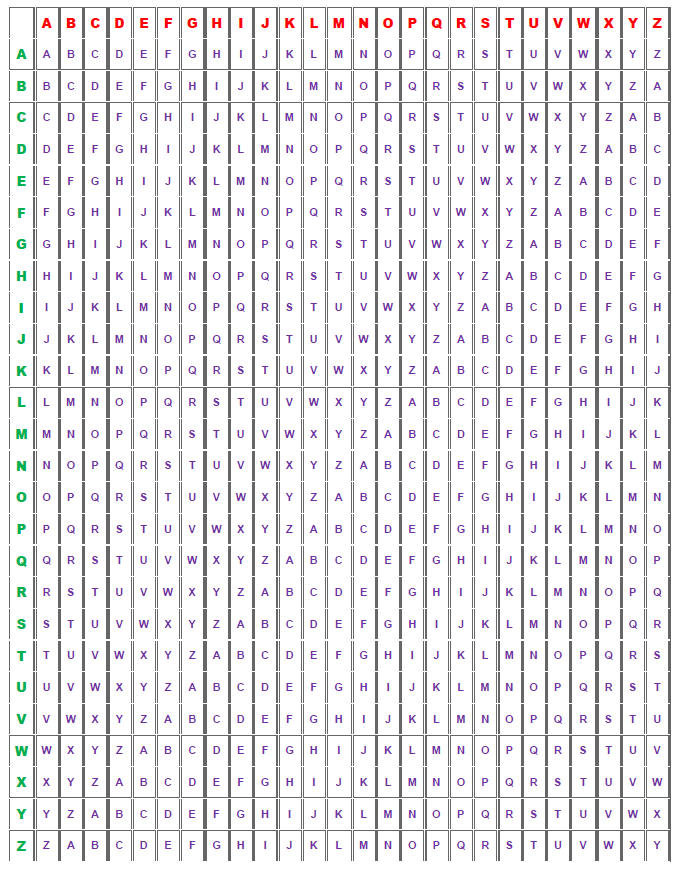

#Substitution cipher free#
txt file is free by clicking on the export iconĬite as source (bibliography): Mono-alphabetic Substitution on dCode. The copy-paste of the page "Mono-alphabetic Substitution" or any of its results, is allowed (even for commercial purposes) as long as you cite dCode!Įxporting results as a.
#Substitution cipher android#
Except explicit open source licence (indicated Creative Commons / free), the "Mono-alphabetic Substitution" algorithm, the applet or snippet (converter, solver, encryption / decryption, encoding / decoding, ciphering / deciphering, breaker, translator), or the "Mono-alphabetic Substitution" functions (calculate, convert, solve, decrypt / encrypt, decipher / cipher, decode / encode, translate) written in any informatic language (Python, Java, PHP, C#, Javascript, Matlab, etc.) and all data download, script, or API access for "Mono-alphabetic Substitution" are not public, same for offline use on PC, mobile, tablet, iPhone or Android app! The substitution is said to be monoalphabetic because it uses only one alphabet, this alphabet is said to be disordered. Ask a new question Source codeĭCode retains ownership of the "Mono-alphabetic Substitution" source code. An alphabetic substitution is a substitution cipher where the letters of the alphabet are replaced by others according to a 1-1 correspondence (a plain letter always corresponds to the same cipher letter). In game-play journals, substitution games / exercises are often called cryptograms.

Then there are substitutions that use several alphabets, alphabet that changes depending on an algorithm defined by encryption (e.g. txt file is free by clicking on the export iconĬite as source (bibliography): Caesar Cipher on dCode.First, some substitution use specific alphabets, such as Atbash that takes the alphabet backwards ZYXWVUTSRQPONMLKJIHGFEDCBA or the Caesar cipher which uses a shifted alphabet DEFGHIJKLMNOPQRSTUVWXYZABC that is shifted by 3. The copy-paste of the page "Caesar Cipher" or any of its results, is allowed (even for commercial purposes) as long as you cite dCode!Įxporting results as a.

Except explicit open source licence (indicated Creative Commons / free), the "Caesar Cipher" algorithm, the applet or snippet (converter, solver, encryption / decryption, encoding / decoding, ciphering / deciphering, breaker, translator), or the "Caesar Cipher" functions (calculate, convert, solve, decrypt / encrypt, decipher / cipher, decode / encode, translate) written in any informatic language (Python, Java, PHP, C#, Javascript, Matlab, etc.) and all data download, script, or API access for "Caesar Cipher" are not public, same for offline use on PC, mobile, tablet, iPhone or Android app! Ask a new question Source codeĭCode retains ownership of the "Caesar Cipher" source code. The exact date of creation and its real author are unknown.
#Substitution cipher code#
The code was named after Julius Caesar who was born in 100 BCE the first man which has testimonies (like Suetonius) proving that he used this type of substitution to protect his military communications. More generally ROT-N with N the shift, if N < 26 then the Latin alphabet is used, else it can be any other custom alphabet. ROT47 code for ASCII printable characters, the shift is 47 and reversible ROT5 code for digits, the shift is 5 and reversible ROT13 code, the shift is 13 and reversible See You (CU) code, C = U, the shift is 18ĬEASAR (with a wrong spelling) where E=A or A=E, the shift is either +4 or -4 (=22)Īny 2-letter code that can give an association between a crypted char and the plain one (see gramograms) This shifting property can be hidden in the name of Caesar variants, eg.:īaden Powell (scoutism founder), B = P, the shift is 14 Caesar cipher is also known as Shift Cipher. In this section, we will study the following substitution techniques: Substitution Technique: Caesar Cipher Monoalphabetic Cipher Playfair Cipher Hill Cipher Polyalphabetic Cipher One-Time Pad Caesar Cipher This the simplest substitution cipher by Julius Caesar.


 0 kommentar(er)
0 kommentar(er)
